1.the Old Town of Lijiang

The Old Town of Lijiang, also known as Dayan Town, is located in the old town area of Lijiang City. The streets in the Old Town of Lijiang are built near mountains and rivers, paved with red breccia. the Old Town of Lijiang has colorful local ethnic customs and entertainment activities. the Old Town of Lijiang reflects the achievements of ancient urban construction in China, and is one of the types of Chinese folk houses with distinctive characteristics and styles.
2.Yulong Snowmountain
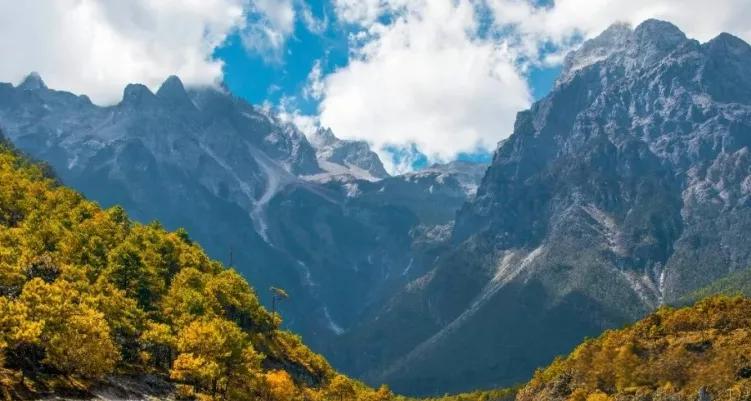
Yulong Snow Mountain, located in Yulong Naxi Autonomous County, Lijiang City, is the southernmost snow mountain in the Northern Hemisphere. The main peak, Fan, has a steep altitude of 5596 meters, and the high mountain snow landscape is located at an altitude of over 4000 meters. It has a dangerous, strange, beautiful, and beautiful scenery, with thirteen snow peaks wrapped in silver and continuous, like a “giant dragon” soaring and dancing, hence it is called the “Jade Dragon”.
3.Lugu Lake

Lugu Lake, located in Yongning Town, Ninglang Yi Autonomous County, Lijiang City, with an altitude of 2690 meters, is the highest lake in Yunnan and one of the deepest freshwater lakes in China. Lugu Lake is known as the “Pearl of the Plateau” and is an unpolluted virgin lake. Lugu Lake has a deep blue sky and pure lake water, and time is still here.
4.shuhe ancient town
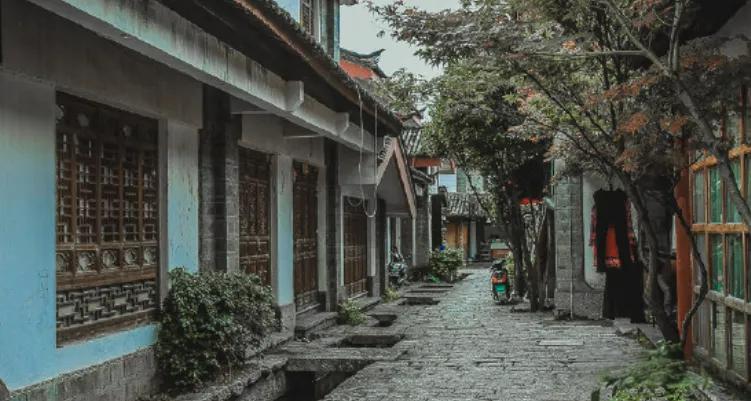
Shuhe Ancient Town, located in the northwest of the Old Town of Lijiang, has a large number of Naxi residents. Shuhe is the origin of the Muzhi Chieftain, with a history of more than 800 years, which is longer than the the Old Town of Lijiang. The houses that live in are built with wooden structures, which have a smell of antiquity. Compared with the three major ancient towns in Lijiang, Yunnan, it has a strong flavor of ancient town, which is not so commercial, but rather primitive and simple.
5.Mufu
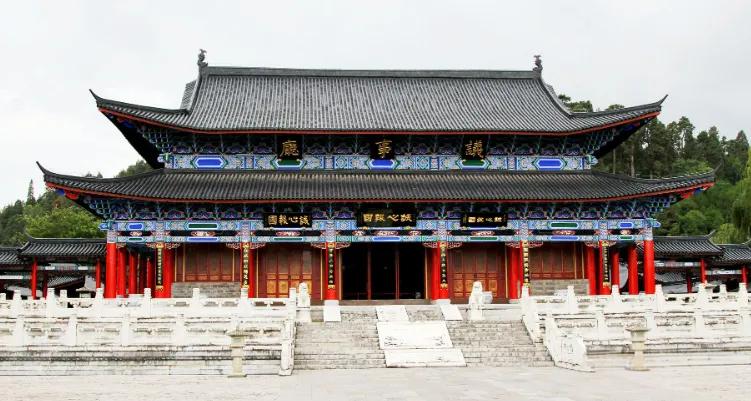
Mufu, located in the ancient town area of Lijiang City, is the residence of the Mu clan chieftains of Lijiang throughout history. The architecture has the style of Ming Dynasty Central Plains architecture and the craftsmanship of the Bai and Naxi ethnic groups, exquisite and spectacular. Xu Xiake once praised it as “the beauty of the palace, intended to be a king”. Although the Mu Mansion is a chieftain’s mansion, its magnificent palaces are not inferior to those of the royal family. It is said that it was built in imitation of the Forbidden City at that time, and during its heyday, there were more than 100 palace buildings.
6.Heilongtan Park

Black Dragon Pool Park is located at the foot of North Elephant Mountain in the Old Town of Lijiang. Going upstream from the water wheel, there is a crystal clear spring pool, which is Black Dragon Pool. Here, you can take photos of the beautiful Jade Dragon Snow Mountain, admire many ancient buildings in the courtyard, and climb up Elephant Mountain to overlook the ancient city. It is an important attraction in the ancient city.
7.Baisha Ancient Town

Baisha Ancient Town is located in Baisha Town, Yulong Naxi Autonomous County, Lijiang City. It was once the political, economic, and cultural center of Lijiang and the initial settlement of Naxi people in Lijiang Dam, preserving the original Naxi culture. The ancient town retains its original appearance and has not been excessively developed. Compared to Dayan and Shuhe, it is quieter, and when you look up, you can see the Jade Dragon Snow Mountain. The Baisha mural is the most famous attraction in the town, painted for over 300 years from the early Ming Dynasty to the early Qing Dynasty, making it a great place to learn about Dongba culture.
8.Yushui Village
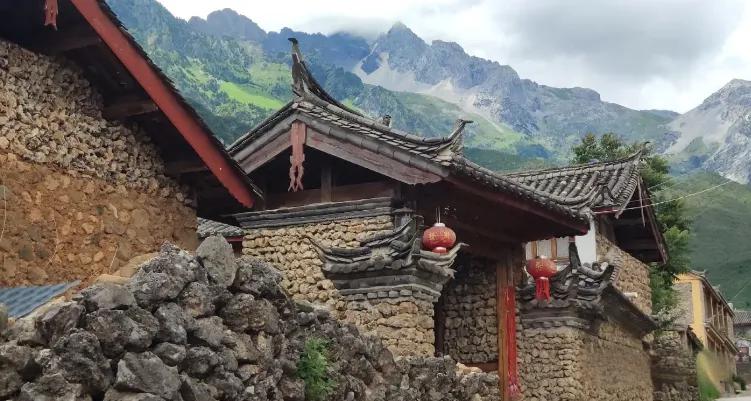
Yushuizhai Scenic Area is located at the foot of Yulong Snow Mountain in Baisha Town, Yulong Naxi Autonomous County, Lijiang City. The natural and simple scenery of the mountain village, especially the ethereal and clear water scenery, is admirable. This is still the holy land of Dongba religion for the Naxi people, where you can learn about the unique and splendid Naxi culture such as sacrifice and papermaking.
9.Lashihai
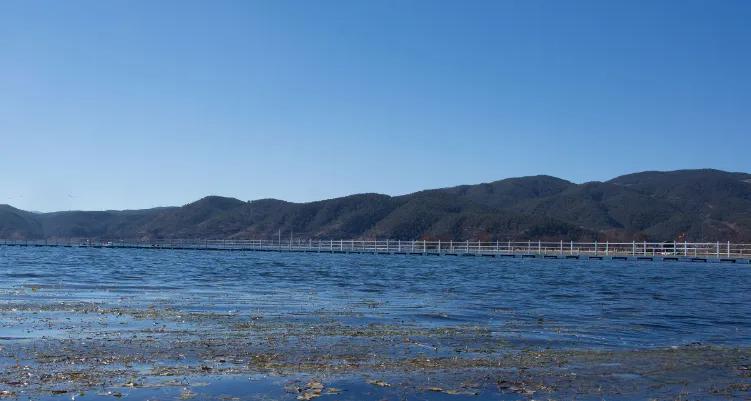
Lashihai Wetland Park, located in Haidong Town, Yulong Naxi Autonomous County, Lijiang City, is a wetland with abundant water and beautiful grass. It is a wintering habitat for many migratory birds, with over 100000 birds wintering every year. The lakeside is lush with vegetation, and the mirror like smooth water reflects the blue sky and white clouds, creating a peaceful and harmonious atmosphere. Surrounding the lake are Naxi villages, and each village facing the lake has established a horse ranch, providing visitors with horseback riding for sightseeing and boating for leisure.
10.Blue Moon Valley
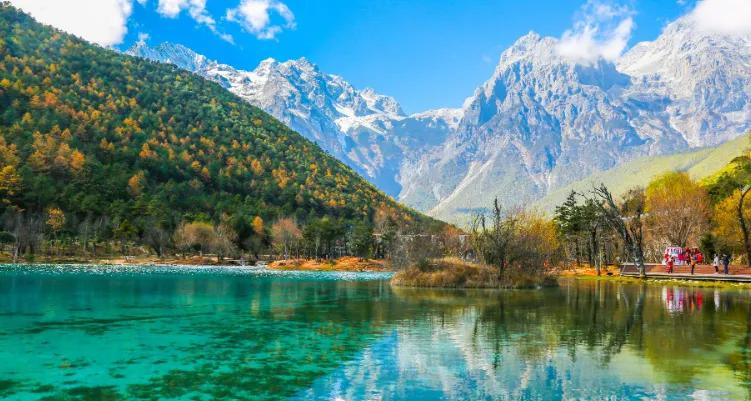
Blue Moon Valley is located at the foot of Yulong Snow Mountain in Yulong Naxi Autonomous County, Lijiang City. It is formed by the Baishui River flowing through this area, which melts the water from Yulong Snow Mountain. The pool water is clear to the bottom and has a fantastic blue color, which is very eye-catching. It is commonly known as the “Baishui River”. Blue Moon Valley has four lakes with different colors: “Yuye” Lake, “Jingtan” Lake, “Blue Moon” Lake, and “Tingtao” Lake. There are also many small waterfalls arranged in a staggered manner, which are very beautiful.
11.Dongba Valley
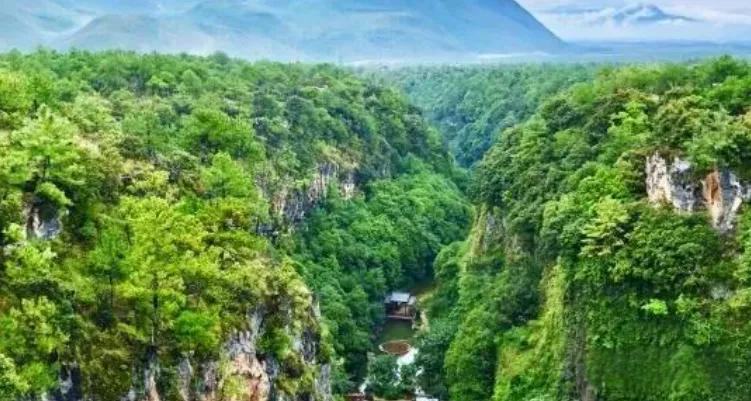
Dongba Valley, located in Baisha Town, Yulong Naxi Autonomous County, Lijiang City, is one of the famous cultural relics in Yunnan Province. Dongba Valley is famous for its unique Dongba culture. It is a natural ecological canyon that was torn apart during the ancient mountain building movement and is a must pass for entering the Yulong Snow Mountain scenic area.
12.Dongba Wanshen Garden

Dongba Wanshen Garden is located next to Yushui Village at the southern foot of Yulong Snow Mountain in Lijiang City, backed by Yulong Snow Mountain. Dongba Wanshen Garden is based on the simple philosophical concept of human and nature of the Naxi ancestors, and the wonderful imagination of life and the world. It is strictly arranged in accordance with the ancient concept of yin and yang corresponding to the gods of heaven and earth, where there is black, there is white, and where there is a god, there are ghosts. Surrounded by green pines and grass, Dongba Wanshen Garden has two giant totem poles at the main entrance that form a main axis with the main peak of the snow mountain.
13.Dongba Kingdom

Dongba Kingdom is located at the foot of Yulong Snow Mountain, 12 kilometers away from the Old Town of Lijiang, and consists of Dongba culture and ancient Naxi ancestors’ villages. The Dongba Kingdom, with the aim of inheriting and promoting the Dongba culture of Naxi people, vividly showcases the theme of advocating the harmonious development of nature and nature, and gathers the national soul of the entire Naxi people. It is a kingdom of spirit and culture.
14.Laojun Mountain Dawn Scenic Area
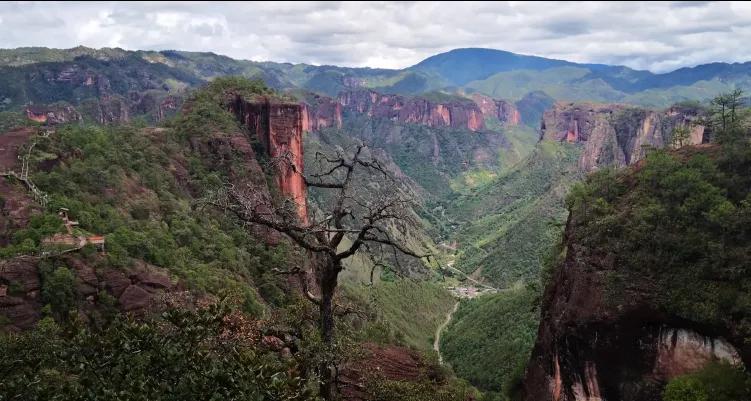
Laojun Mountain Liming Scenic Area is located in Liming Township, Yulong Naxi Autonomous County, Lijiang City. It is famous for its Danxia landform, which covers an area of over 200 square kilometers and is one of the largest Danxia landforms in China. The Danxia area of Liming Gaoshan is mainly distributed within the Liming Lisu Township, including four villages: Liming, Liguang, Meile, and Duimei. Qiangui Mountain is also well-known in the area.
15.skyreach pillar
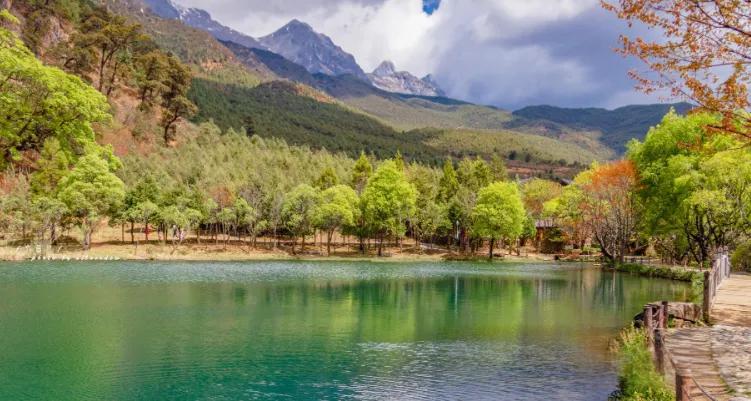
Yuzhu Qingtian Scenic Area is one of the components of Lijiang Yulong Snow Mountain Scenic Area. It is located at the southern foot of the main peak of Yulong Snow Mountain and is also known as the first village under Yulong Mountain – Wuluken (Baisha Yuhu Village). Yuzhu Qingtian is located at an altitude of about 2800 meters. The main attractions include the Giant Stone Wall, Taizi Cave, Guanyin Rock, Xuesong Temple, Millennium Ancient Tree, Shangxia Shentan Waterfall, and the former residence of the American Austrian scholar Locke. The reflection of Yuhu Lake is the first of the twelve scenic spots of Yulong Snow Mountain.
16.Three streams of water
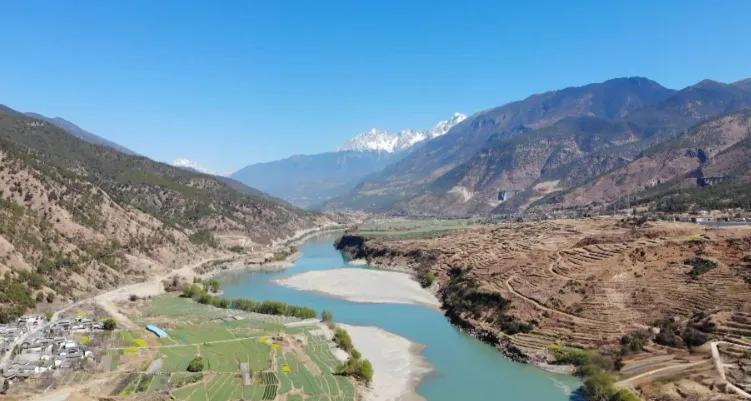
San Gu Shui Scenic Area is located in Hongwen Village, Yulong Naxi Autonomous County, Lijiang City. It is a scenic area that integrates natural landscapes such as mountains, rivers, canyons, and rural scenery, as well as cultural landscapes such as Tea Horse Ancient Street, Naxi Village, and Naxi style. It is a three-way intersection of the old Tea Horse Ancient Road leading to Lijiang and Tibet. San Gu Shui Mao Jin Di is a key location on the Tea Horse Ancient Road, with a natural and simple style, surrounded by mountains and waters, and a beautiful environment.
17.Guanyin Gorge
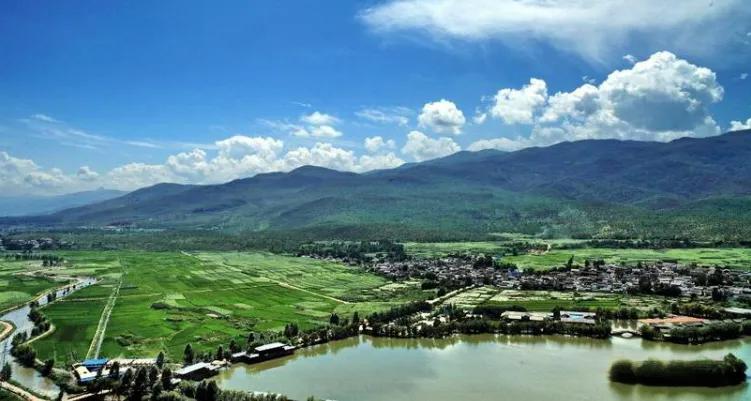
Guanyin Gorge Scenic Area, located in the southeast of Lijiang City, is the first dangerous fortress on the Yunnan Tibet Highway of the Tea Horse Ancient Road and is known as the “first scenic spot in Lijiang”. The Guanyin Gorge Scenic Area consists of two areas: Huanglongtan and Guanyin Gorge. The scenic area is full of mountains, rivers, lakes, canyons, forests, and waterfalls, with beautiful natural scenery. In addition, there are ancient Naxi villages, remnants of the Tea Horse Ancient Road, religious temples and other cultural landscapes. Walking into the Guanyin Gorge, which is full of charm, feels like returning to the era of tea horse trade.
18.Yufeng Temple
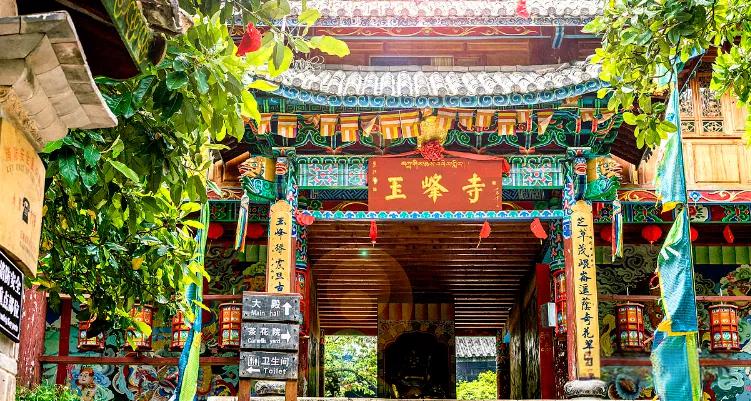
Yufeng Temple is located at the southern foot of Yulong Snow Mountain north of Lijiang. It was built during the Kangxi period of the Qing Dynasty. The main hall of Yufeng Temple is a courtyard layout, consisting of a gate tower, a main hall, and two households. Layout is harmonious and symmetrical. The temple is surrounded by dense pine and cypress trees, with gurgling springs that converge into a pond. The scenery is beautiful, and there is a famous Chinese and foreign camellia tree in the temple. The camellia is a fusion of two different varieties of camellia trees, with a tree age of nearly 500 years. Due to its annual flowering of 20000 to 30000 flowers, it is named “Ten Thousand Flower Tea”.
19.Wenfeng Temple
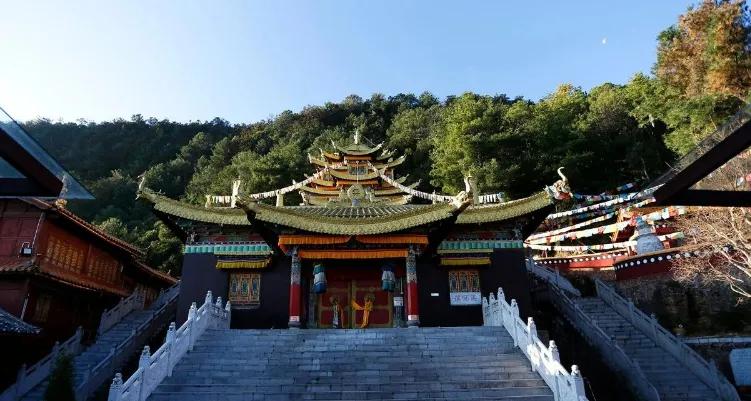
Wenfeng Temple is located at the southwest end of Wenbi Peak in Lijiang Bazi. It was first built in the 11th year of the Yongzheng reign of the Qing Dynasty and expanded in the 4th year of the Qianlong reign and the 8th year of the Daoguang reign. It is a Tibetan Buddhist temple. The scenery of Wenfeng Temple is recognized as the crown of all temples in Lijiang, with the existing main building, main hall, and two monk rooms.
